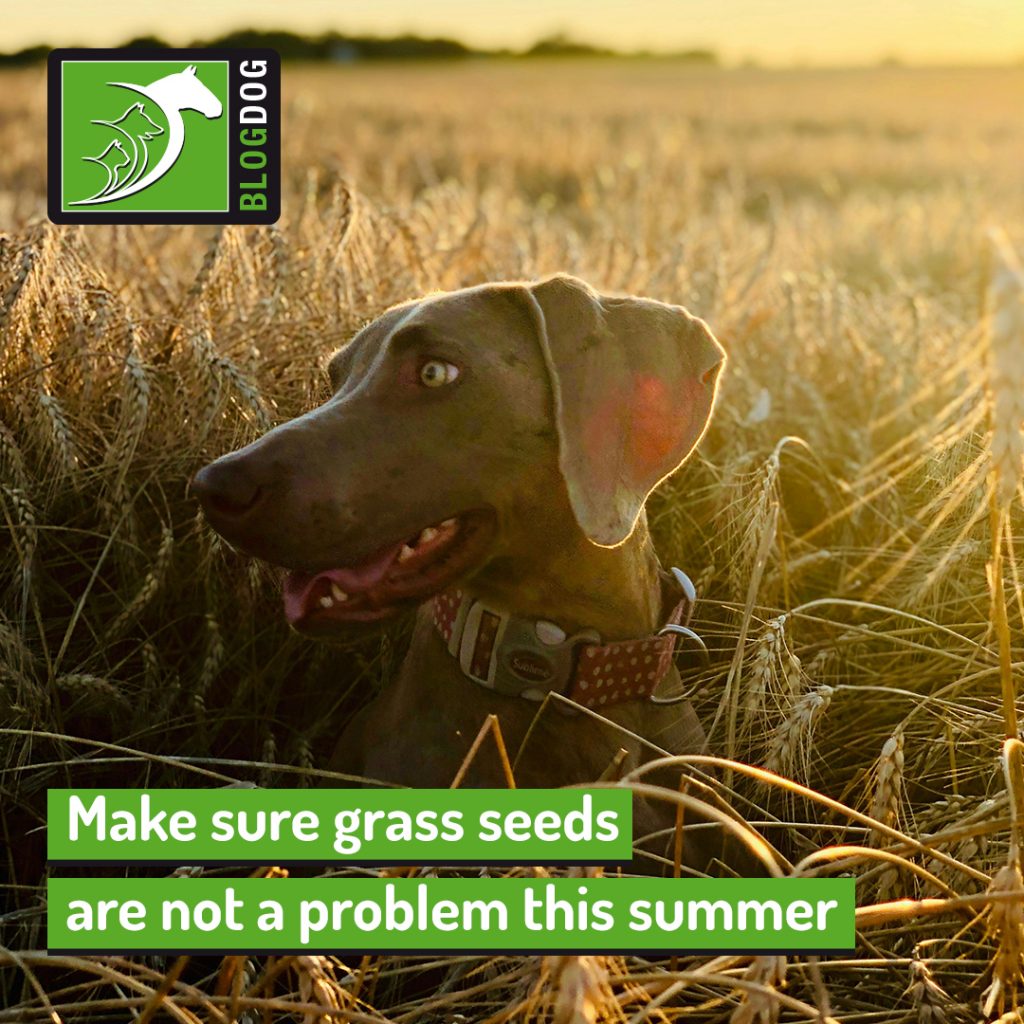If you are yearning for some outdoor adventures with your dog this summer, our blog post is for you!
Walks in the countryside can be great fun, but it’s important to be mindful of grass seeds as these can lead to many problems!
Keep reading to learn more about grass seeds and how to keep your dog away from trouble.
What are grass seeds?
Grass seeds are small, arrow-shaped grass particles and are a common part of the woodland and meadow flora in the UK. As your dog passes by, these seeds can easily detach from the stem, and their bristles make it easy for them to get caught up in your dog’s fur.
Why are grass seeds a problem for dogs? How will I know if my dog is affected?
If grass seeds are entangled in your dog’s fur and stay put, you’re not likely to have problems. However, with your dog’s normal movement, these tend to migrate towards the skin, and their pointy end and arrow shape can easily pierce through.
As you can imagine, this will cause a lot of discomfort and pain, and you may notice your dog licking or nibbling at the affected area if they can reach it.
Other signs associated with grass seeds will vary depending on where they’re positioned. For instance, if the nose is affected, your dog may start sneezing a lot; if the problem area is a paw, you may notice limping. Other commonly affected areas are the ears, eyes, lips, and genitals.
What can I do to help my dog?
If you notice any of the signs mentioned, book an appointment at your vet practice for your dog to be seen. As these signs are common to a range of problems, it’s important for your vet to do a thorough physical exam to find out what is causing them.
If the grass seed is visible, the diagnosis is easy, but tests may be necessary if it is already embedded deep in the skin.
The treatment is aimed at removing the embedded seed and treating any secondary infections that might have developed. Some grass seeds can be removed with tweezers, but if they’ve travelled internally, a surgical technique may be needed.
What about prevention?
The only way you can guarantee grass seeds won’t be a problem is to avoid walking your dog in places where these can be found.
If you decide to go to a place where there are grass seeds, make sure to check your dog’s fur afterwards, paying special attention to the face and between the toes, and remove any seeds that you find. If you notice any soreness, redness and if the area is warm (signs of inflammation), talk to your vet.
If you have a long-haired dog, it may be worth clipping their fur during the summer months, which can also help them feel more comfortable with higher temperatures.
Being aware of these signs can help prevent a range of problems if you enjoy involving your dog in outdoor activities. Other than grass seeds, we’d like to remind you to make sure that your dog’s parasite treatments are up-to-date and to learn more about how to protect them from seasonal hazards such as heatstroke, drowning and adder bites! Stay tuned!
Would you like to know more about dogs? Check our Canine Courses:
![]()
Canine courses

